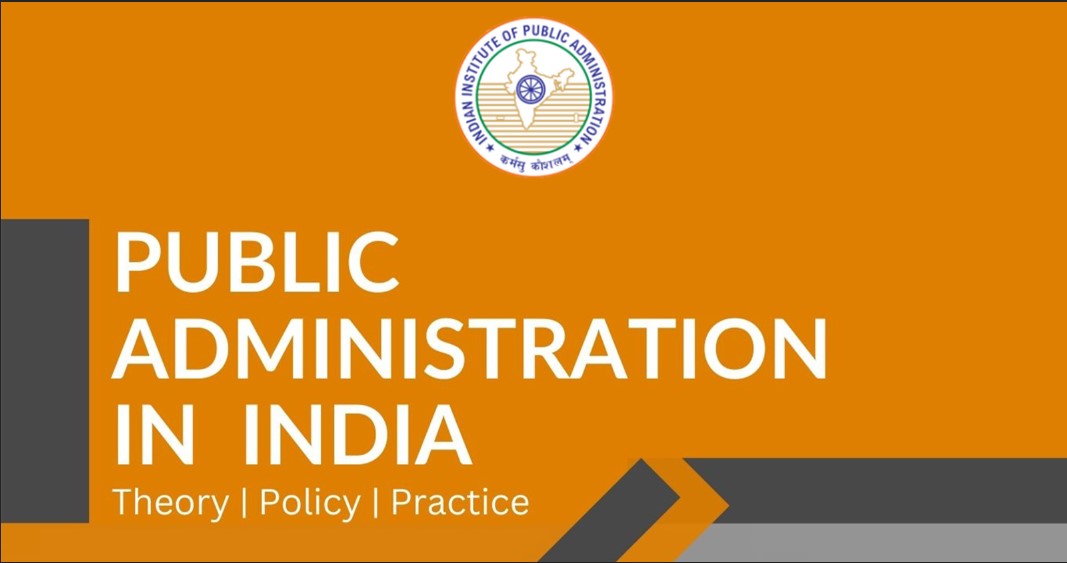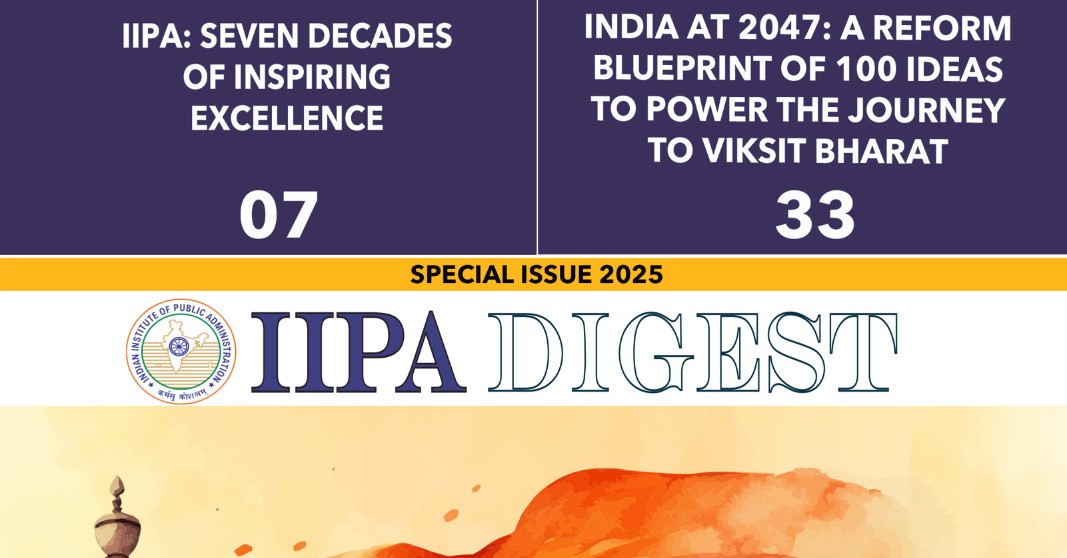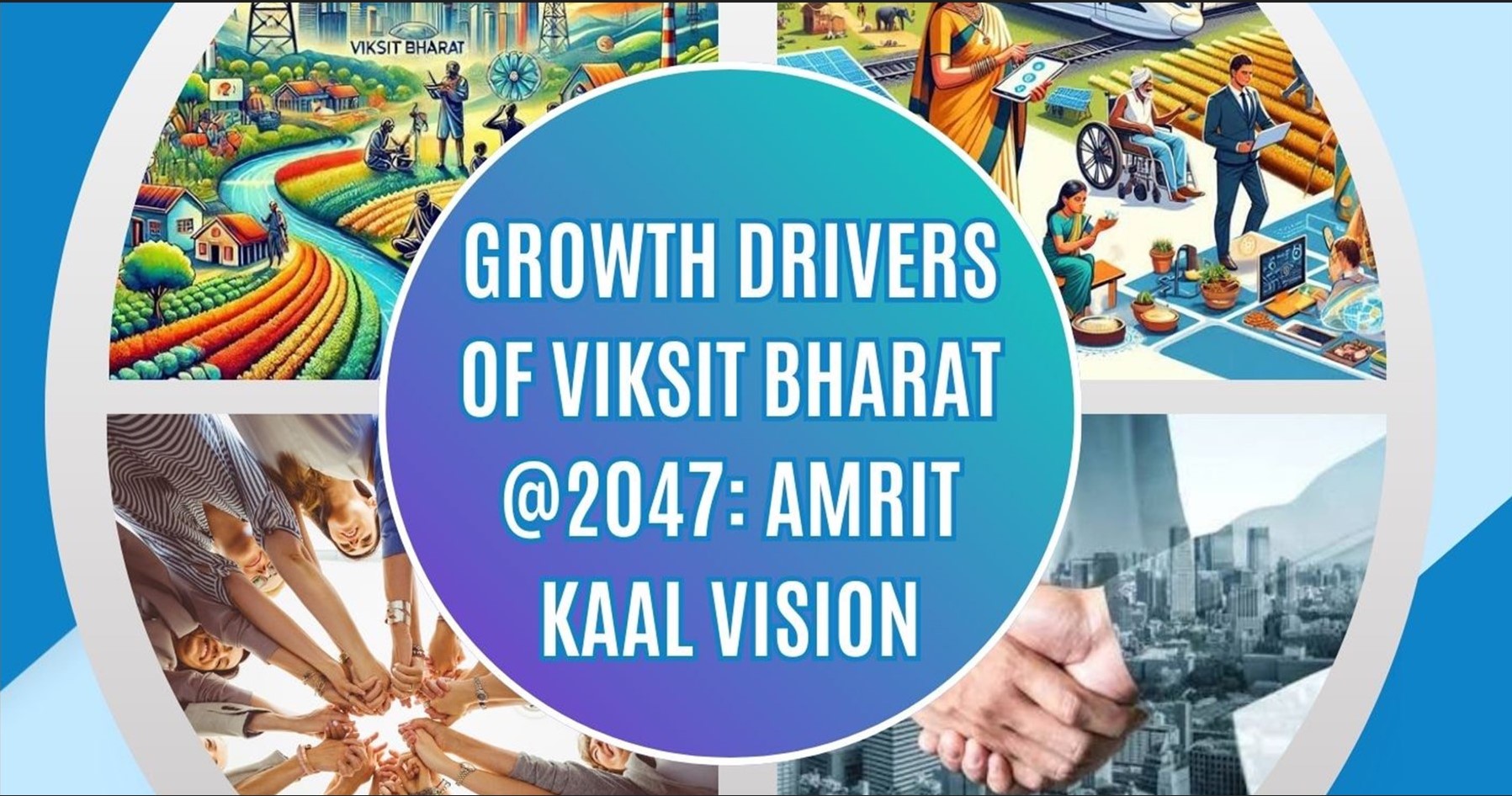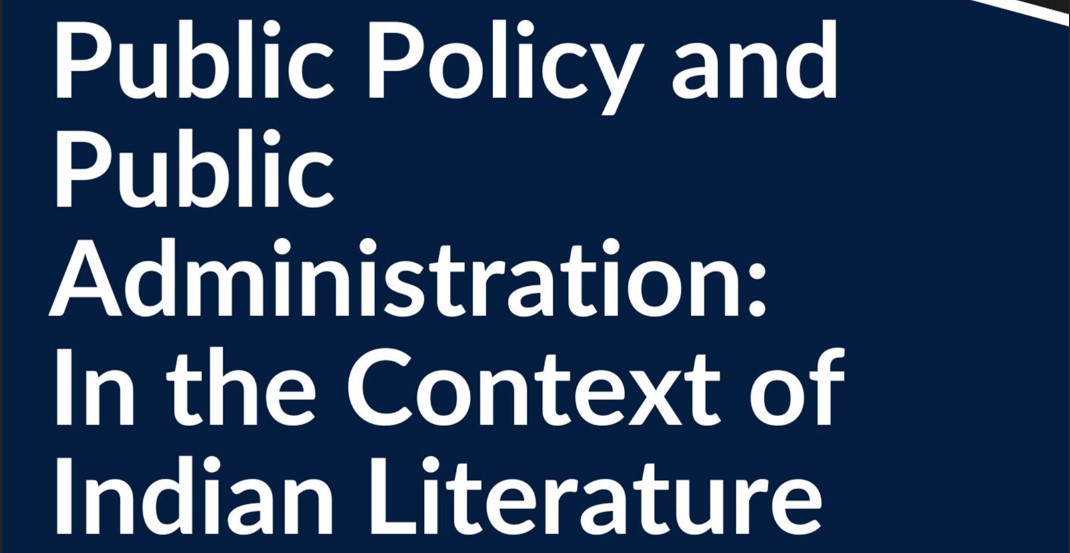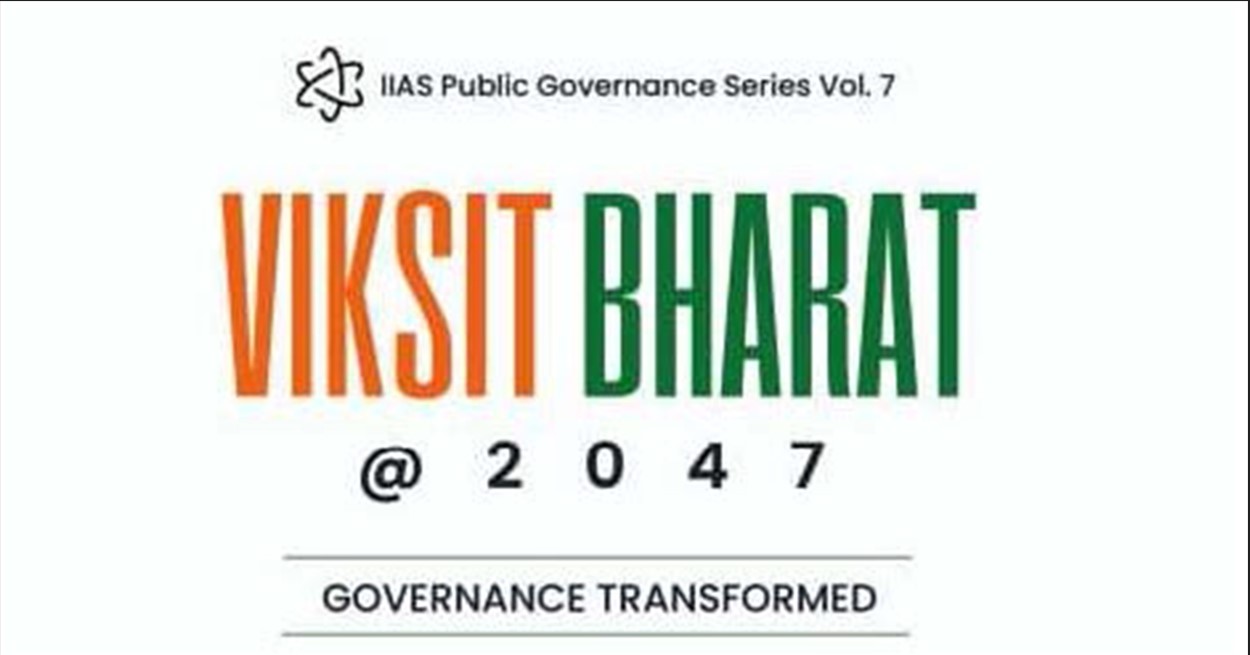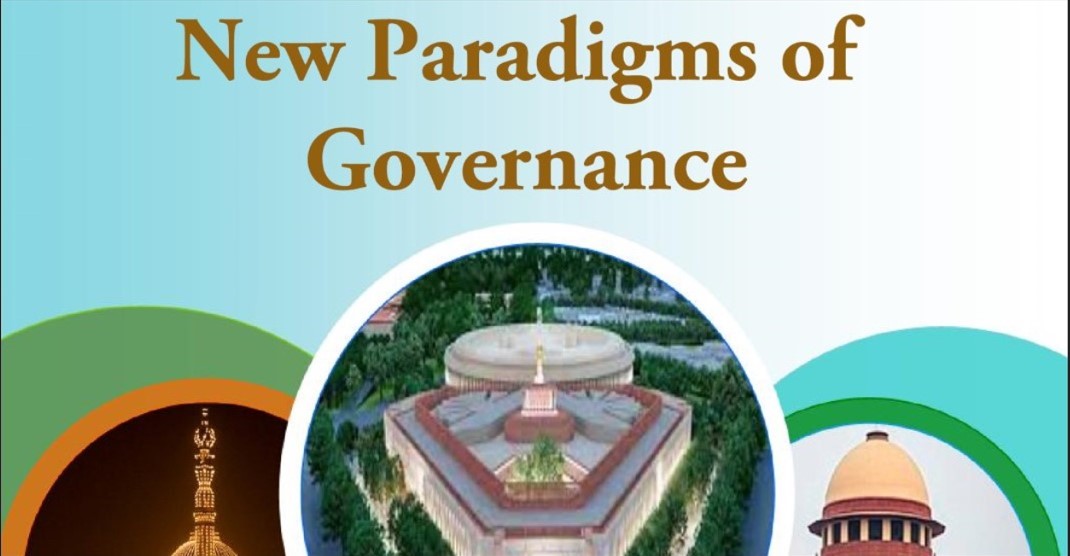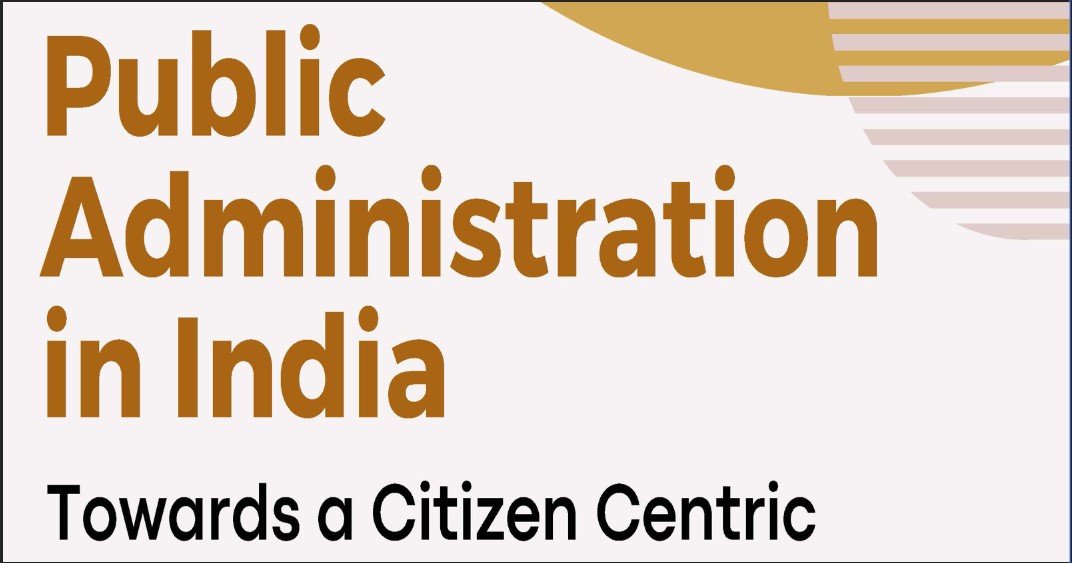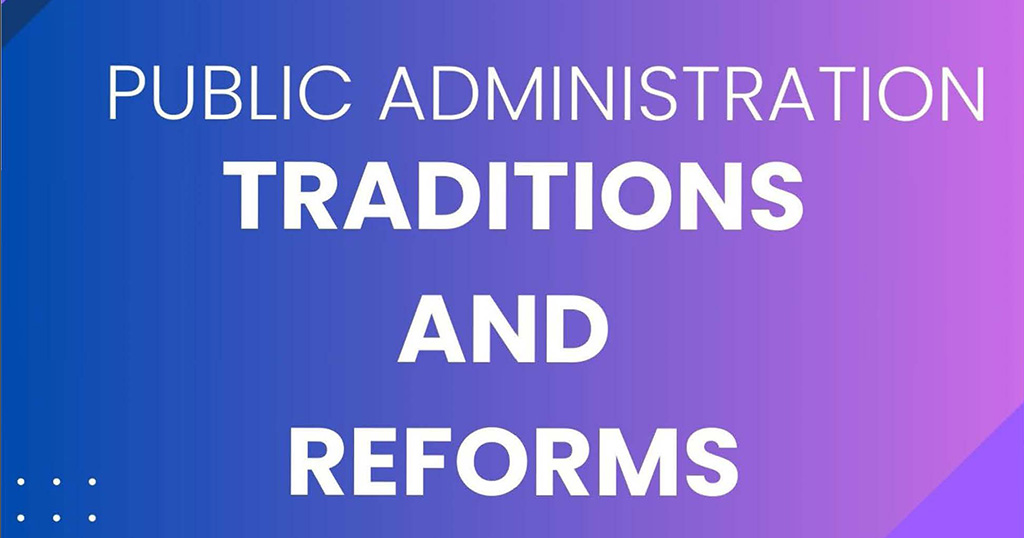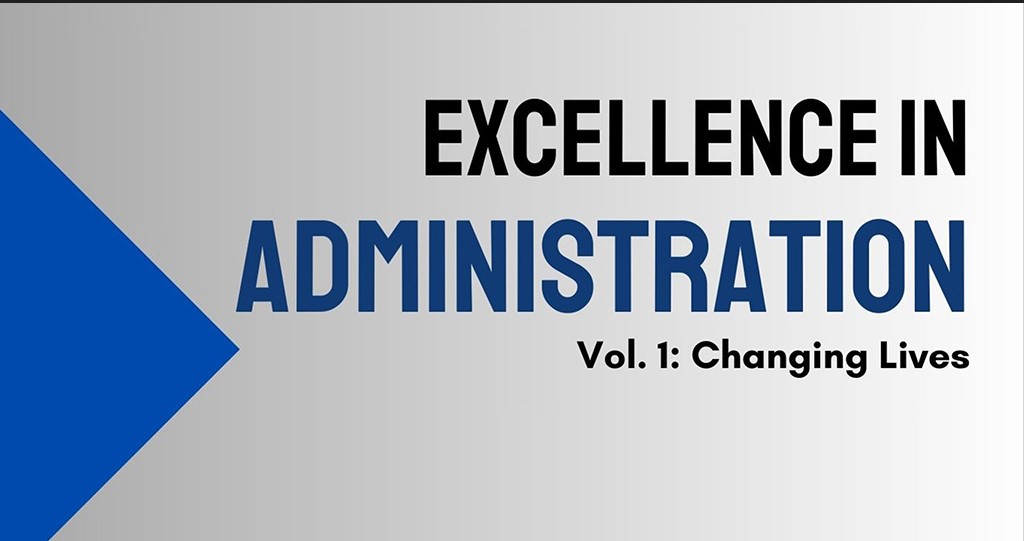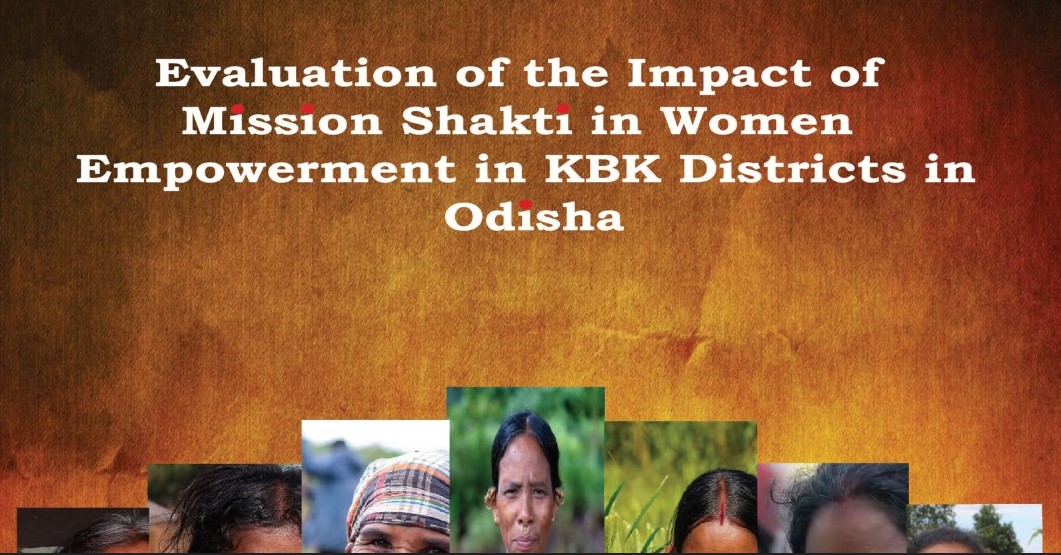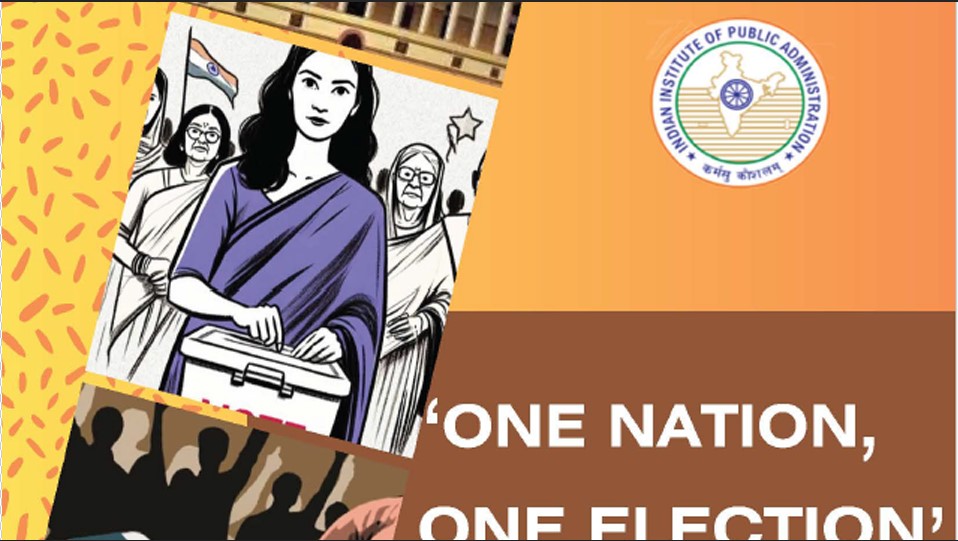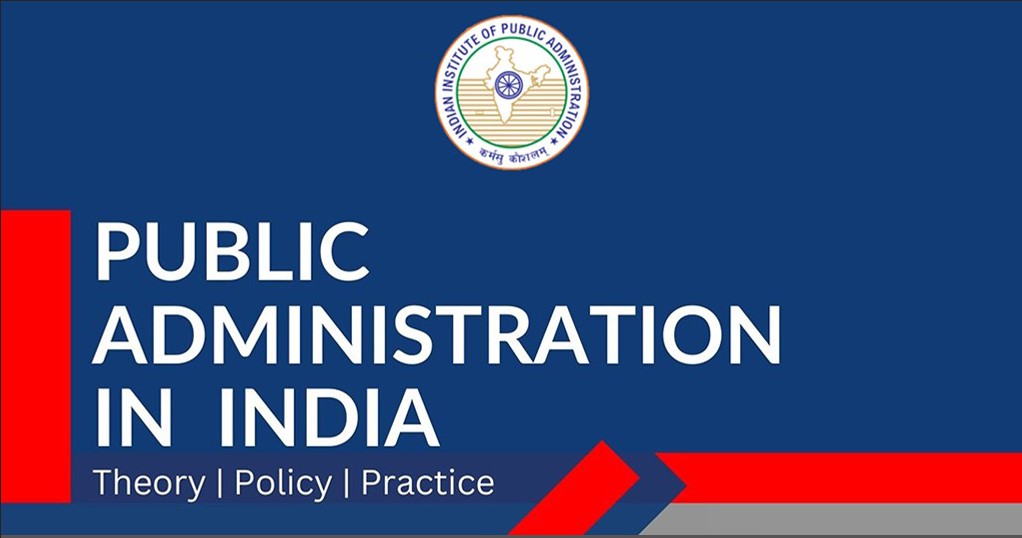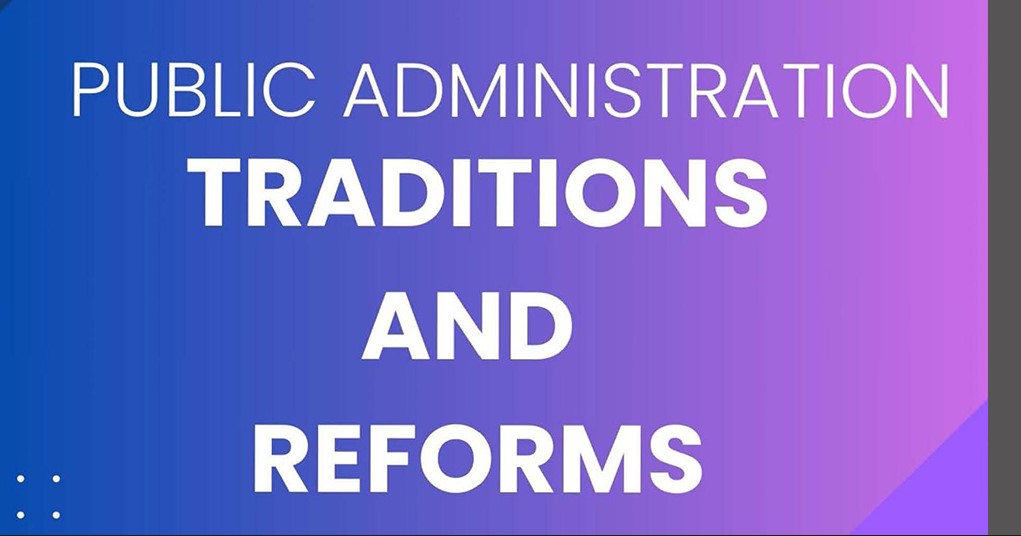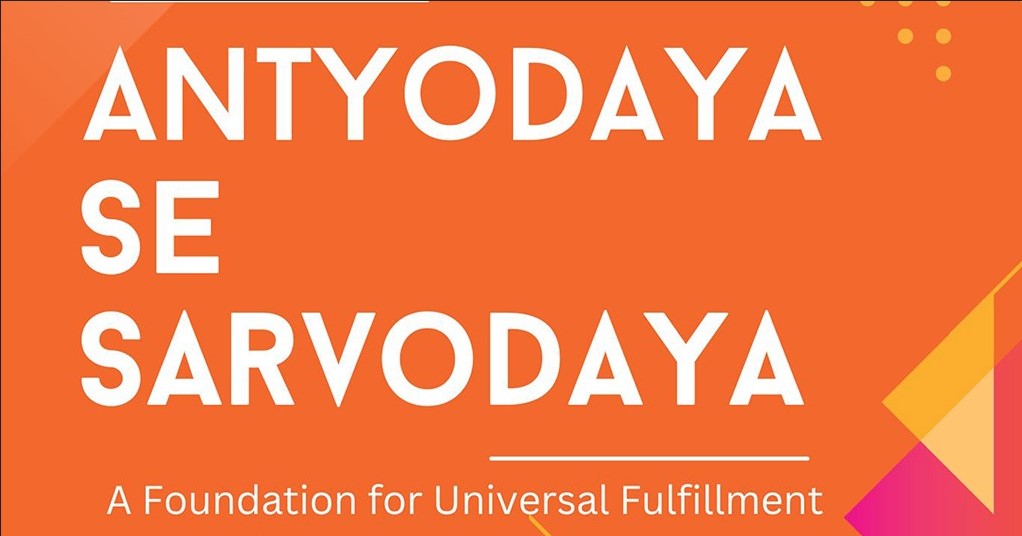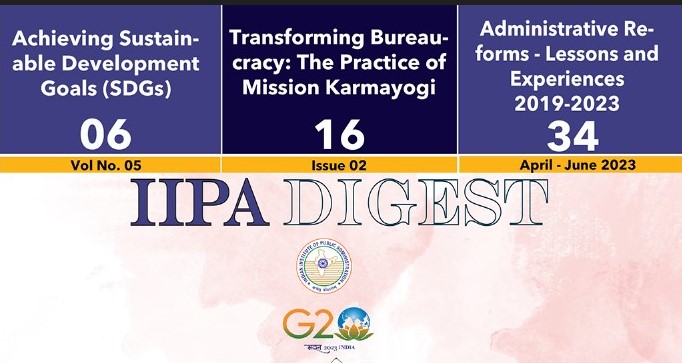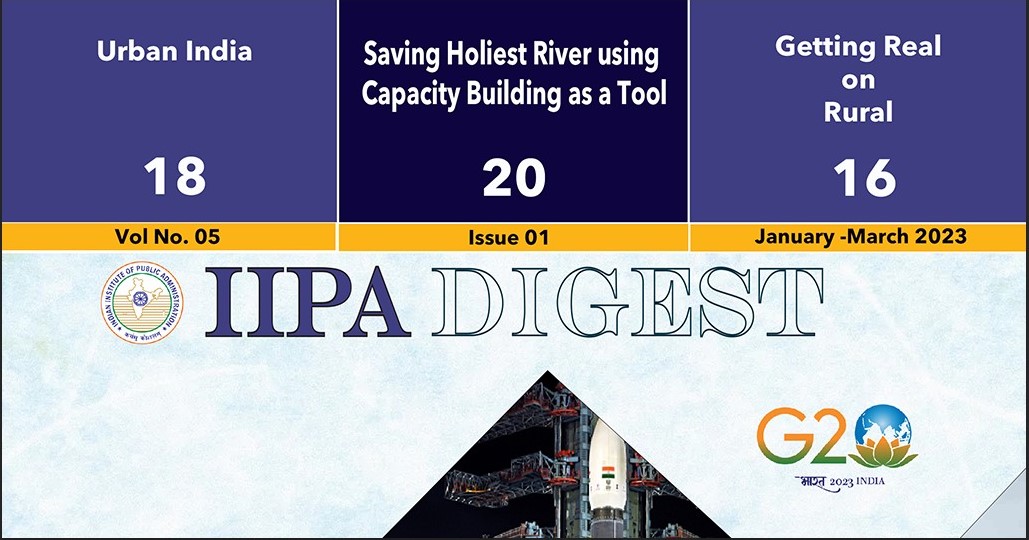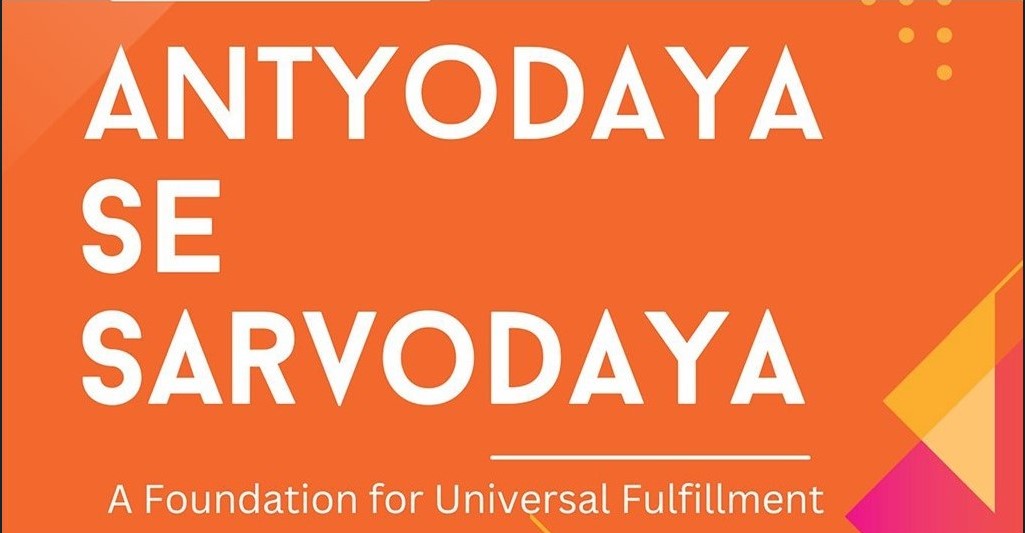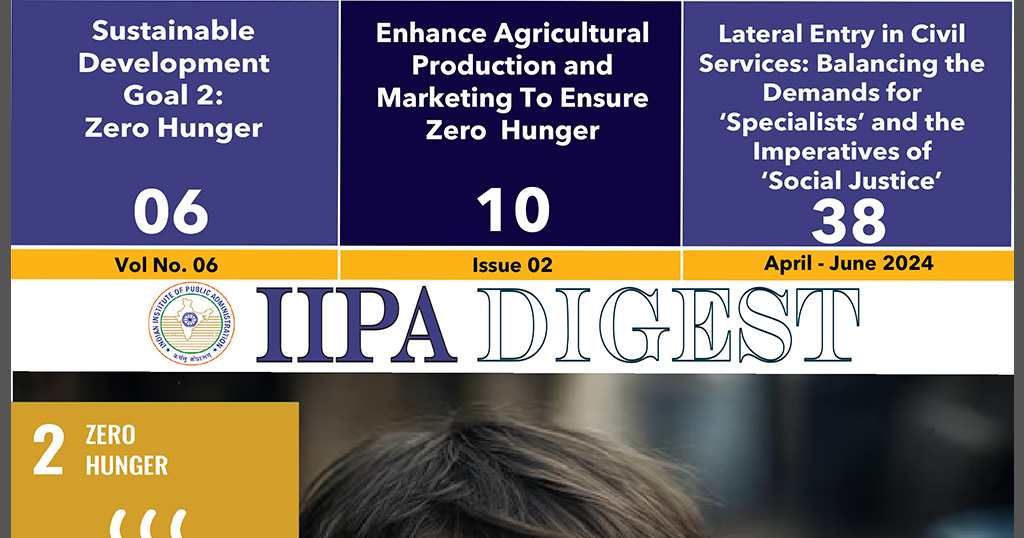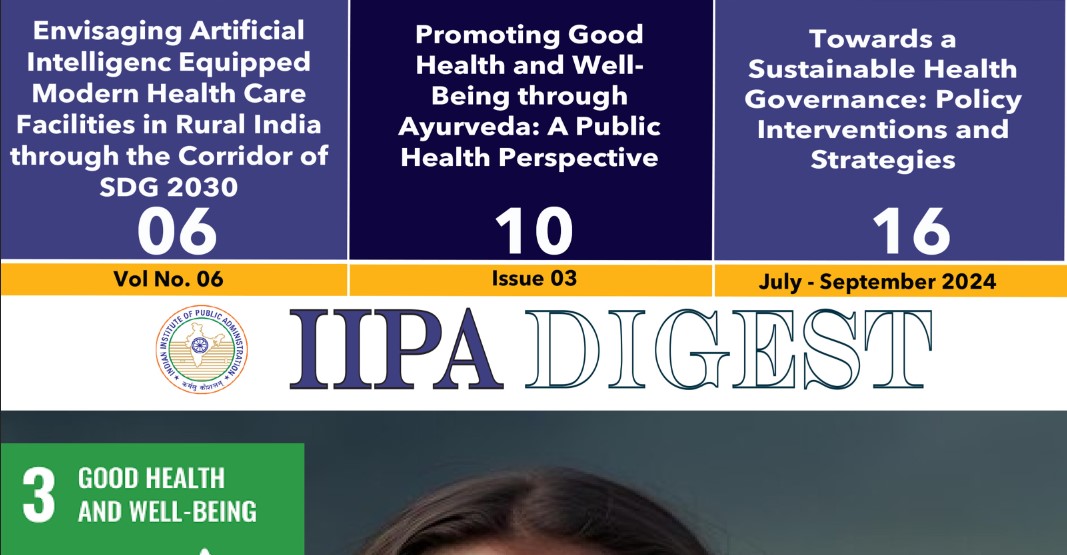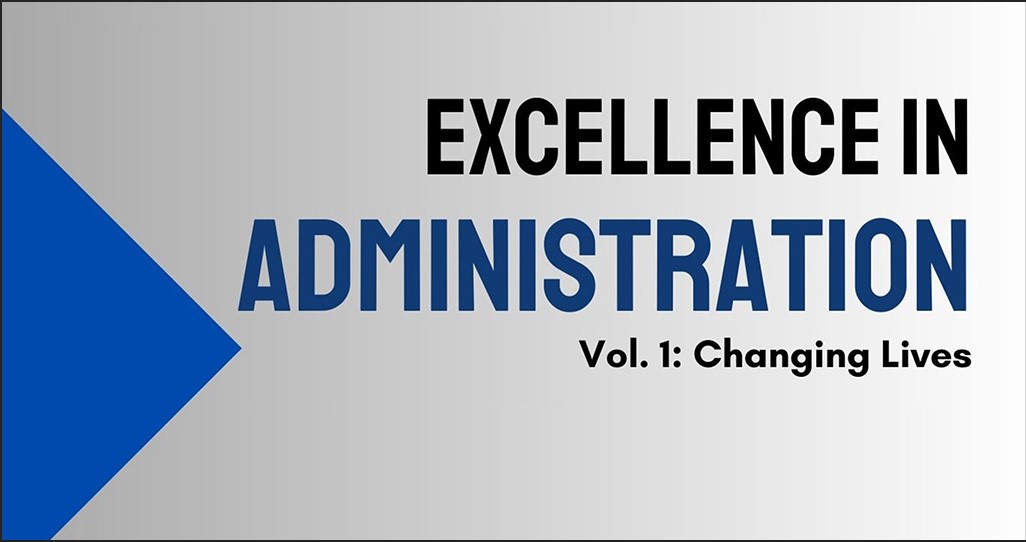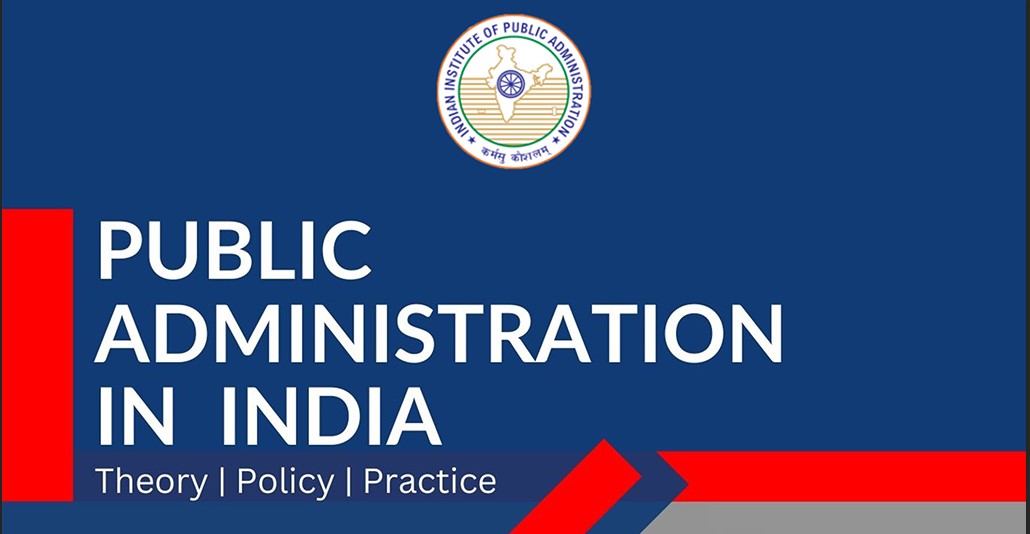Administrative Thought
Abstract
The dynamic interaction between the recognition of human complexity in organizations and the pursuit of structural efficiency has shaped the evolution of administrative philosophy. This chapter critically examines the foundational works of Frederick W. Taylor, Max Weber, Mary Parker Follett, Elton Mayo, Chester Barnard, Rensis Likert, Chris Argyris, and Douglas McGregor, charting the shift from traditional administrative models to participatory, human-centred paradigms. Taylor’s Scientific Management aimed to maximize efficiency by systematizing work processes, whereas Weber’s Bureaucratic Model focused on rational legal authority and a hierarchical hierarchy as the foundation for government. However, the mechanistic emphasis of classical theories was replaced by the humanistic methods of Follett, Mayo, and Barnard, who emphasized the value of cooperation, communication, dispute resolution, informal group dynamics, and leadership flexibility. To further advance the conversation, Likert, Argyris, and McGregor introduced participatory management theories, which emphasize organizational learning, psychological empowerment, and the development of trust-based leadership. Together, their concepts reframed the individual’s function in organizational life as an active, accountable contributor rather than a passive executor. This study synthesizes these viewpoints, contending that modern organizational leadership and public administration must combine the developmental, participative, and sympathetic tenets of human relations theory with the structural rigour of classical models. In a time of technological disruption, networked governance, and elevated citizen expectations, the timeless insights of these thinkers provide important guidance for creating administrative systems that are not only effective and accountable but also inclusive, flexible, and human-centred. By re-examining and reinterpreting these seminal works, this study emphasises the need to strike a balance between human agency and organizational structure, offering a theoretical compass for upcoming administrative and governance reforms in the 21st century.
Keywords: Scientific Management, Bureaucratic Model, Human Relations School, Governance Reforms, Participative Management, Organizational Theory.
Introduction
Human interaction and organizational efficiency have interacted complexly to shape the realm of administrative philosophy. Mass production, the rise of bureaucracy, and complex organizational structures throughout the early stages of industrialization necessitated methodical administration and management. Thinkers like Frederick W. In response to these difficulties, Taylor and Max Weber developed models that emphasized hierarchical coordination, rational-legal authority, and scientific precision. Their achievements paved the way for contemporary administrative science by establishing the structural underpinnings necessary for the smooth functioning of large-scale businesses and governmental organizations.
Weber’s Bureaucracy and Taylor’s Scientific Management were essential for controlling complexity and scale, but they quickly revealed their flaws. Employee discontent, low morale, and organizational rigidity resulted from disrespect for social dynamics, human emotions, and psychological demands. A fresh generation of intellectuals, including Chester Barnard, Elton Mayo, and Mary Parker Follett, responded to these difficulties by turning administrative philosophy toward the human elements of organizations. Follett criticized strict hierarchies and promoted integration, participatory leadership and the contextual exercise of authority. Motivated by Hawthorne studies, Mayo’s Human Relations School emphasized the value of informal groupings, social needs, and morale. Barnard saw companies as cooperative systems, stressing the importance of executive leadership, communication, and striking a balance between individual contributions and organizational incentives.
As a result of this intellectual progress, Rensis Likert, Chris Argyris, and Douglas McGregor developed theories of participative management. Likert’s empirical research showed that systems of participatory decision-making increased output and satisfaction. Argyris proposed that organizational structures should be aligned with double-loop learning and personal psychological development. McGregor’s Theory X and Theory Y reinterpreted managerial presumptions about human nature and promoted leadership philosophies based on shared accountability, empowerment, and trust. Together, these intellectuals broadened the scope of administrative philosophy beyond organizational engineering to include the purposeful development of human potential within institutional frameworks.
The significance of these foundational contributions is enormous in the modern world, which is characterized by globalization, technological disruption, hybrid work forms, and movements for participatory government. Today, public administration faces the twin challenges of maintaining efficiency and accountability while encouraging inclusion, adaptation, and citizen engagement. It is essential to trace the development of administrative philosophy from Taylor and Weber to Follett, Mayo, Barnard, Likert, Argyris, and McGregor to navigate these complications.
By combining the classical and humanistic traditions, this chapter critically examines the development of administrative thinking and considers its enduring relevance for administration in the twenty-first century. This study seeks to shed light on approaches to building effective and profoundly human-centred organizations and governance systems by bridging structural and participatory paradigms.
Frederick W. Taylor and Scientific Management
Rapid industrial growth in the early 20th century was marked by extensive output, complex supply chains, and company expansion. Despite these developments, several inefficiencies were discovered, including uneven work practices, a shortage of competent workers, and managerial choices based more on gut feeling than on facts, which resulted in considerable productivity losses. In this context, Frederick Winslow Taylor, who is frequently regarded as the "Father of Scientific Management," presented a novel strategy for integrating scientific principles into organizational management. Moving away from the conventional reliance on heuristics, Taylor maintained that increasing industrial efficiency necessitated a careful examination and arrangement of labour processes.
Taylor’s famous time-and-motion experiments, in which he closely analyzed worker tasks to identify the most effective ways to accomplish them, were the main focus of his work. He created a methodical technique to increase productivity by breaking down difficult operations into smaller, standardized parts and timing each operation. These studies served as the foundation for work standardization by defining each activity according to best practices, which decreased waste and unpredictability. Workers’ productivity increased significantly because they were forced to rigidly follow established procedures rather than being left to fend for themselves.
Taylor’s ideology placed a strong emphasis on hiring and training staff using a scientific method. He disagreed with the widespread custom of allocating positions according to tenure or preference. Instead, he advocated selecting people according to their skills and methodically educating them to perform their jobs as efficiently as possible. Taylor argued that management and employees should work together instead of conflict. He claimed that when scientific management principles were applied correctly, both parties would benefit: owners would make more money from increased efficiency, and workers would be paid more for their increased productivity. His publication, The Principles of Scientific Management (1911), which became a classic in administrative philosophy and industrial engineering, is where these ideas were most famously expressed.
Despite its significant influence, Taylor’s Scientific Management was heavily criticized. The dehumanization and alienation of employees were one of the main problems. Taylor’s method frequently robbed workers of their autonomy, inventiveness, and sense of achievement by reducing their employment to repetitive, mechanical chores. Later, sociologists like Harry Braverman and labour movement critics argued that scientific management deskilled labour, turning workers into interchangeable parts of a vast industrial system. Furthermore, Taylor mainly ignored workplace social factors, such as informal connections, morale, and employee happiness, which would later become important subjects in organizational theory, particularly through the Human Relations School.
Today, Taylor continues to have a significant impact, especially in the areas of digital governance and modern public service administration. This focus on process optimization through automation and AI has a striking resemblance to Taylor’s rationalization concepts. For instance, Taylor’s method is reflected in machine learning algorithms used in public administration, healthcare, and logistics. They identify inefficiencies, break down difficult jobs into quantifiable parts, and standardize responses to increase efficiency. Similarly, Taylor’s emphasis on efficiency measurements has had a significant impact on contemporary PSD, where administrative efficiency is evaluated through the use of instruments such as performance indicators, benchmarking, and service-level agreements (SLAs).
Additionally, Taylor’s influence may be seen in fields such as supply chain management and e-governance platforms, where the focus is on using scientifically defined workflows to improve citizen happiness, streamline service delivery, and reduce processing times. However, modern modifications have come to understand the significance of striking a balance between efficiency and human-centred considerations a lesson that Taylor’s original framework completely ignored.
Frederick W. Taylor’s Scientific Management established the basis for data-driven organizational effectiveness. Although it initially disregarded human issues, its central idea the scientific study of labour processes remains essential to management techniques. Even when more recent methods include human components, Taylor’s ideas still impact efficiency and standardization in contemporary public administration.
Max Weber and The Bureaucratic Model
The sociopolitical landscape of Europe saw substantial changes in the late 19th and early 20th centuries, as evidenced by the decline of feudal institutions, the rise of constitutional governments, the expansion of capitalist economies, and the creation of complex administrative states. Considering this, German sociologist and political economist Max Weber sought to understand and theorise the logical organization of power. His concept of bureaucracy, which was most fully developed in The Theory of Social and Economic Organization (1947), created a foundational framework for understanding contemporary administrative organizations and still influences today’s public administration and governance theories.
Weber identified three ideal types of legitimate authority: traditional, charismatic, and legal-rational. Each offers a distinct basis for the legitimacy of government. As demonstrated by monarchies or tribal institutions, traditional authority derives its legitimacy from long-standing practices and traditions. Charismatic authority, which frequently leads to revolutionary changes, is founded on an individual’s charm, bravery, or leadership qualities. Weber’s bureaucratic model, which is based on legal-rational authority, depends on a system of established laws, regulations, and practices that govern the use of power. Weber argued that bureaucracy based on legal-rational principles emerged because of the inability of conventional and charismatic forms of power to preserve order and predictability in an increasingly complex society.
Weber defines an ideal bureaucracy as a clearly defined hierarchical organization, in which each tier has control over the one below and is answerable to the one above. It includes impersonal contacts between officials and clients, a formal set of rules and regulations to guide decision-making, and a division of labour that prioritizes specialization. Merit-based hiring and advancement are decided by technical proficiency, and official and personal obligations are well segregated. According to Weber, bureaucracy was the most logical and technically sound organizational structure for complex societies because it guaranteed accuracy, speed, clarity, continuity, secrecy, unity, and rigorous subordination.
Nevertheless, Weber foresaw the bureaucracy’s potential risks and criticisms. He was well-known for warning about the "iron cage" of rationalism, where people could become trapped in effective but potentially dehumanizing control structures. Despite providing order and predictability, bureaucracies can lead to inflexibility, needless bureaucracy, goal misalignment, and innovation stifling. The impersonality of bureaucracy, which makes it reasonable, can also make it unresponsive to human needs or unique situations. Organizational inertia can occur over time, causing processes to be continued for their own sake rather than to achieve the intended results.
Despite major modifications and reinterpretations, Weber’s bureaucratic model remains highly relevant in today’s administrative environment. New Public Management (NPM) reforms emerged in the late 20th century in response to bureaucratic inefficiencies. These changes prioritized flexibility, performance review, customer focus, and market-oriented approaches to public service delivery. NPM sought to bring the vitality and effectiveness of the private sector to administrative systems by eschewing strict Weberian hierarchies in favour of more efficient organizational structures.
A total departure from Weberian ideas was neither desirable nor feasible, notwithstanding these revisions. The Neo-Weberian State concept, which has had a major impact on European administrative reforms, combines Weber’s emphasis on professionalism, legality, and merit-based systems with participatory governance and responsiveness to service requirements. Weberian concepts, such as accountability, rule-based decision-making, and procedural transparency, remain essential safeguards against capricious behaviour and corruption in a society beset by globalization, digitalization, and increasingly networked government.
Furthermore, Weber’s concerns regarding the "iron cage" have changed into new difficulties in the digital governance and AI-powered public services era. Algorithms that automate decision-making raise new questions about openness, impersonal governance, and the capacity for discretion in complex individual circumstances. The bureaucratic ideals of impartiality and consistency must now be balanced with the demands of flexibility, creativity, and citizen-centred methods. Weber’s bureaucratic model offered a framework for comprehending authority and administration in contemporary civilizations. Weber’s ideas of efficiency, meritocracy, and legality must be balanced by modern administrators without becoming inflexible. His observations still apply to public administration to achieve innovation and structure.
Mary Parker Follett and Dynamic Administration
Mary Parker Follett was a pioneer in the field of organizational theory during a time when mechanical and hierarchical models were dominant. Follett promoted a fundamentally new approach to administration that emphasized human relations, integration, and participative leadership. Her theories, which were impressively ahead of their time when they were written in the early 20th century, laid the foundation for many principles that would later become essential to collaborative governance, organizational behaviour, and dispute resolution. Follett’s revolutionary notion of conflict resolution was her primary contribution to administrative thought. She argued that conflict was normal, inevitable, and even advantageous, challenging the idea that it was always bad and therefore to be avoided.
She rejected two conventional approaches to dispute resolution: compromise, in which both parties make compromises that frequently leave both sides only half happy, and dominance, in which one party forces its will on the other. Instead, Follett proposed integration as a third strategy. Integration is a creative approach to dispute resolution that results in a new solution that is not only a compromise but a greater synthesis, meeting the demands of both sides. Today, the idea of integrative conflict resolution is still fundamental in disciplines such as corporate leadership, mediation, and negotiation.
Follett’s concept of power was also revolutionary. Importantly, she distinguished between "power-over" and "power-with." While the latter emphasized a shared, cooperative power attained through collaborative problem-solving and mutual understanding, the former explained the traditional top-down enforcement of authority. Follett believed that true leadership was about facilitating the development of group goals and actions rather than exercising power over others. This idea previewed modern collaborative and participatory leadership styles and radically challenged the C&C paradigms of her time.
According to Follett’s important contribution, authority should be decided by the particular requirements of a circumstance rather than by a person’s position within a hierarchy. She argued that decision-making should be based on facts, with leadership adjusting as necessary. This idea promoted a more flexible, situation-driven, and expertise-oriented approach to power while contesting bureaucratic structures’ rigidity. Concepts such as situational leadership and adaptive management which are especially relevant in intricate and rapidly changing governance contexts—are based on this premise.
Follett emphasized the importance of coordination as the primary duty of the administrative branch. She proposed four principles for coordination: acknowledging reciprocal relations (interdependent relationships should be consciously recognized and managed), ensuring direct contact (communication should be direct rather than filtered through hierarchical levels), maintaining continuity (coordination should be sustained throughout all processes), and starting early (planning should begin with coordination). Following these guidelines, she envisioned organizations as dynamic, organic, and changing communities rather than strict hierarchies.
Follett is an important contemporary artist. Her ideas provide crucial insights in the era of decentralized government, stakeholder participation, and cooperative policy creation. Her concept of "power-with" and integrative problem-solving is embodied in the rise of collaborative governance frameworks, in which different governmental, corporate, and civil society institutions collaborate to address social concerns. Follett’s emphasis on team dynamics, participative leadership, and seeing conflict as a springboard for creativity is also highly compatible with contemporary HRM best practices. Her early beliefs are the intellectual forerunners of leadership theories that emphasize EI, a common vision, and team empowerment.
Follett’s understanding of organizational dynamics predicted several advancements in agile public administration and networked governance. In complex adaptive systems, such as public health plans, urban planning initiatives, or climate governance, authority cannot be rigidly hierarchical. Rather, Follett suggested that the key to effective governance is to respond to the needs of the situation, share learning, and flexibility. However, throughout her lifetime, Follett’s contributions were not extensively recognized in the male-dominated professions of public administration and management. Only later, especially in the 1950s, did academics acknowledge her important role in forming the humanistic tradition of administrative philosophy. She is recognized today as one of the first thinkers to highlight relational leadership, human dignity, and group purpose as essential components of organizational success.
In summary, Follett made revolutionary contributions to administrative thought by emphasizing integration, participative power, situational authority, and continuous coordination. Her theories questioned the inflexibility of hierarchical systems and foresaw several management and governance problems. Follett’s observations are not only significant historically but also vital and extremely relevant now for public administrators who must manage complexity, promote stakeholder engagement, and support responsive leadership in the 21st century.
Elton Mayo and Human Relations
In the early 20th century, as industrialization reached its zenith, organizations encountered challenges that the mechanistic management models could not completely resolve. While Taylor’s Scientific Management enhanced task efficiency and Weber’s bureaucracy introduced structured systems, worker dissatisfaction, absenteeism, and inefficiency persisted. Elton Mayo, an Australian psychologist and organizational theorist, made significant contributions in this context by emphasizing the social and emotional dimensions of work rather than just the technical or structural aspects. Mayo revolutionized the understanding of organizational behavior and laid the foundation for modern theories on motivation, leadership, and organizational culture through the Human Relations School.
Elton Mayo’s significant impact emerged from the Hawthorne Studies, which occurred at the Hawthorne Works of the Western Electric Company in Chicago from 1924 to 1932. These studies were originally designed to explore the effect of workplace lighting on worker productivity. However, the results were surprising. Whether the lighting was enhanced or dimmed, productivity consistently increased. This led researchers to deduce that social factors, especially the feeling of being observed and valued, had a greater impact than physical workplace conditions. Further research broadened the scope to include interviews, group observations, and incentive experiments. These findings underscore the crucial influence of informal social interactions, group standards, and employee morale on organizational success.
One of Mayo’s significant insights was the recognition of the role of informal groups within the workplace. Employees created social networks that had as much impact on behavior as official management systems. Employees followed suit when these informal groups valued high productivity; however, if they opposed management’s objectives, productivity declined, regardless of any rewards or penalties. Mayo also highlighted the importance of employee morale, emphasizing that workers are social beings who seek acknowledgement, security, and a sense of community and are not driven by financial incentives. This perspective marked a significant shift from the rational-economic assumptions of Taylorist models.
Mayo also made a significant impact by highlighting the importance of leadership style and the supervisor’s role in creating a positive work environment. His research indicated that supervisors who interacted with employees with empathy, maintained open communication, and nurtured a supportive atmosphere achieved better productivity and reduced employee turnover than supervisors who took an authoritarian approach. This understanding contributed to the early development of PM and the view of leadership as a relational role rather than solely a directive one.
Mayo’s research also led to a wider acknowledgement of the psychological dimensions of work, paving the way for future advancements in motivation theory. Maslow’s hierarchy of needs, Herzberg’s two-factor theory, and McGregor’s Theory X and Theory Y expanded on Mayo’s fundamental insight that psychological satisfaction is as crucial as material conditions in influencing employee performance.
Nonetheless, Mayo and the HRS faced their share of criticism. Some academics contended that his focus on social cohesion overlooked structural problems such as inequality, exploitation, and workers’ autonomy. Additionally, some critics argued that the HR approach could be manipulative, employing psychological strategies to boost productivity without addressing core labour rights or enhancing workers’ actual economic situations. Moreover, Marxist critics claimed that Mayo’s theories were more about quelling labour unrest than genuinely empowering workers.
Although there are criticisms, the significance of Mayo’s work is clear. Recognizing the value of morale, social bonds, and employee engagement is more crucial than ever in the current landscape of remote and hybrid work settings, where direct oversight and physical presence are less prominent. Companies are now heavily investing in building team unity, promoting emotional health, and cultivating a culture of appreciation—concepts that resonate with Mayo’s early theories. Furthermore, contemporary strategies for employee engagement surveys, organizational development efforts, diversity and inclusion programs, and leadership training continue to embody the HRS’s core principles. Whether it involves managing remote teams, guiding multicultural teams, or ensuring employee contentment in highly automated settings, understanding that people desire meaning, acknowledgement, and a sense of belonging remains essential.
Public administration has embraced Mayo’s ideas. Modern civil services recognize that bureaucratic efficiency should be paired with methods that boost employees’ motivation and workplace well-being. Changes aimed at reducing stress, improving communication, and supporting supervisory environments stem from the HR approach. Mayo’s Human Relations School shifted administrative thinking from technical aspects to the social dynamics of organizational life. Today, his focus on informal organization, group norms, and empathetic leadership continues to influence organizational management. Mayo’s work demonstrates that success depends on creating environments where people feel appreciated and empowered.
Chester Barnard and Executive Functions in Organizational Cooperation
In the emerging area of organizational theory in the early 20th century, Chester I. Barnard was a singular thinker who saw organizations as cooperative systems that required the active management of both formal and informal components. In his seminal work, The Functions of the Executive (1938), Barnard synthesized concepts from management, psychology, and sociology to provide a theory of administration that was both pragmatic and based on people. Scholars’ and practitioners’ perceptions of organizational leadership, authority, communication, and the dynamic interaction between formal structures and informal human behaviour have all been profoundly and permanently influenced by his ideas.
According to Barnard, organizations are structures in which two or more people consciously coordinate their actions. He claimed that organizations could not function without the cooperation of individuals pursuing a common goal. This emphasis on teamwork was a fundamental component of Barnard’s theory: for an organization to succeed and last, it must guarantee that people will continue to be ready to make contributions to the organization’s objectives. This viewpoint represented a change from previous theorists, such as Taylor and Weber, who primarily focused on authority, tasks, and structure without carefully considering the prerequisites for voluntary cooperation.
Barnard made important contributions, one of which was his ability to distinguish between official and informal groups. Formal organizations are purposefully created and set up to achieve specific goals with clearly defined power structures. Conversely, informal organizations develop organically from member social interactions that influence their motivations, attitudes, and actions. Barnard recognized that the informal structure provided vital social cohesiveness and drive and that official authority may be vulnerable without it. He anticipated subsequent developments in organizational behavior that emphasized the significance of unofficial networks, cultures, and group dynamics by acknowledging this.
Barnard’s view is based on the importance of the executive’s job. According to Barnard, the primary responsibilities of an executive go beyond simply issuing directives or upholding regulations; they also include maintaining a collaborative structure. He listed the following three essential executive roles:
First, establish and maintain a communication system.
The second is getting the services you need from others by encouraging them to work together.
Creating and expressing the goals and objectives of the company.
Barnard believed that effective communication was a process of establishing relationships and giving meaning rather than just conveying instructions to maintain organizational unity.
One of Barnard’s more illuminating ideas is the "zone of indifference" concept. When given commands that fell within a range they considered acceptable and in line with their interests, he suggested that employees would follow them without questioning them. Consequently, power was dependent on the agreement of the subordinates rather than being absolute. This relational perspective on authority, a stance that foreshadowed many contemporary concepts in participative management and leadership theory, emphasized that executives’ influence came from their ability to promote voluntary cooperation as well as from their formal roles.
The idea of the contribution-satisfaction balance was also introduced by Barnard, who proposed that individuals would only continue to devote their efforts to an organization if they were provided with sufficient material and non-material incentives that satisfied their own objectives. Successful leaders had to carefully understand and manage this balance to ensure that the organization’s rewards aligned with individual needs and preferences. Subsequent motivational ideas, including psychological contracts and employee engagement tactics, were based on this knowledge.
In this context, Barnard's ideas are extremely pertinent to the problems that modern businesses face, particularly in dynamic and interdependent governance frameworks. Cooperation across formal boundaries has become essential as public and commercial sector organizations increasingly function within complex ecosystems with multiple stakeholders. Networked governance, public-private sector collaborations, and collaborative service delivery models all require the type of leadership that Barnard outlined—one that prioritizes trust-building, communication, and a common goal over hierarchical control.
Because decentralized organizational structures, remote labour, and virtual teams necessitate creative communication tactics and ways to stay united, Barnard’s observations are extremely relevant in the digital age. The contemporary belief that interpersonal interactions, corporate culture, and social conventions are frequently more important for success than formal structures and processes is foreshadowed by his emphasis on informal organization.
Barnard’s approach is not perfect. His concept is criticized for idealizing peaceful cooperation while ignoring structural injustices and power disparities that prevent participation. However, his work is significant because it demonstrates how human systems rely on their members’ coordination and value. Finally, Chester Barnard’s theory brought important humanistic viewpoints to administrative theory by highlighting cooperation, communication, and shared goals. His dynamic, relational perspective on companies continues to shape organizational design and leadership techniques, solidifying his influence on management.
Participative Management: Contributions of Rensis Likert, Chris Argyris, and Douglas Mcgregor
The idea of administration and organization underwent a dramatic change in the mid-20th century. Despite their value, it became more evident that mechanical efficiency and hierarchical control were insufficient to inspire employees and maintain successful firms. Rensis Likert, Chris Argyris, and Douglas McGregor developed the idea of PM by expanding on the humanistic tradition founded by scholars such as Mary Parker Follett and Elton Mayo. Employee participation in organizational procedures, TBL, and shared decision-making are all emphasized under this concept. When taken as a whole, their contributions represent a significant shift away from considering employees as just cogs in a machine and toward their recognition as competent, self-driven individuals whose involvement improves organizational effectiveness.
Rensis Likert was among the earliest scholars to propose that participative decision-making leads to superior organizational performance. Likert developed the Four-System Model of Management through his empirical studies, particularly at the University of Michigan’s Institute for Social Research:
• System 1: Exploitative-Authoritative;
• System 2: Benevolent-authoritative;
• System 3: Consultative; and
• System 4: Participative group.
He believes that the most productive and satisfied workers are found in companies that follow System 4, which is characterized by decentralized decision-making, trust, open communication, and group engagement. According to the empirical research of Likert, participatory systems improve goal alignment between management and staff and raise morale. His emphasis on connecting pins people who serve as intermediaries between various organizational groups further emphasized the importance of communication and interpersonal trust in participatory systems.
Chris Argyris added a crucial psychological viewpoint that greatly enhanced the concept of PM. Argyris argued in his ground-breaking work, especially "Personality and Organization" (1957), that conventional bureaucratic organizations frequently suppressed people’s innate developmental demands, including competence, autonomy, and self-actualization. He promoted the idea that companies should match their organizational structures to their constituents’ psychological development. Argyris developed the idea of double-loop learning, a process in which people and organizations examine and modify their underlying presumptions and conventions in response to feedback. Double-loop learning encourages greater flexibility and creativity in PMSs by giving staff members the confidence to positively question established procedures. Therefore, Argyris emphasized that participation is about fostering critical thinking, personal development, and organizational learning rather than just participating in decision-making.
McGregor reinforced and popularized participative management through his formulation of Theory X and Theory Y, which he presented in his influential book The Human Side of Enterprise (1960).
• Theory X assumes that employees are inherently lazy, lack ambition, and must be coerced or closely supervised to perform.
• In contrast, Theory Y posits that employees are self-motivated, seek responsibility, and can exercise creativity when properly engaged.
McGregor argued that the assumptions made by managers about their employees significantly shape organizational behaviour and outcomes. A Theory Y-focused strategy naturally aligns with participative management, where employees are trusted, involved in setting objectives, and granted the freedom to oversee their tasks. McGregor’s work transformed the leadership model toward trust, empowerment, and developmental support, steering away from strict control-based systems.
Likert, Argyris, and McGregor present a cohesive and complementary viewpoint on participative management. According to Likert’s empirical research, participatory systems outperform authoritarian ones. Argyris contributed a psychological paradigm that emphasized the need to meet human growth needs for organizational well-being. Meanwhile, McGregor offered theoretical presumptions regarding human nature that lend credence to participatory approaches. Their combined efforts challenged the bureaucratic conventions of their time and sparked the creation of organizations that are resilient, adaptable, and human-centred.
Currently, participative management is quite important. Organizations are increasingly realizing the importance of treating workers as partners rather than subordinates in today’s knowledge-driven economies, where creativity, innovation, and adaptability are highly valued. Public administration has also adopted participatory governance models, ranging from participatory budgeting in urban management to citizen participation in policymaking. The theories of Likert, Argyris, and McGregor have impacted democratic workplace cultures, agile management techniques, and leadership development programs in various industries.
Participatory management has become more crucial in a world that has been altered by the pandemic, where distant work, hybrid teams, and decentralized decision-making are now commonplace. Trust, communication, empowerment, and psychological safety are among the fundamentals of PM that are essential to organizational resilience and employee well-being. However, there are still difficulties. Cultural shifts, steadfast leadership commitment, and investments in communication and conflict resolution techniques are all necessary for implementing PM. Participation might become purely symbolic without genuine effort, undermining rather than building trust. According to Likert, Argyris, and McGregor, involvement must be sincere, methodical, and in line with corporate goals and human developmental requirements for it to be genuinely effective.
Comparative Reflection: Classical and Humanistic Visions of Administration
A shift from inflexible, structure-focused models to flexible, human-centred approaches may be seen in the evolution of administrative theory through the works of Taylor, Weber, Follett, Mayo, Barnard, Likert, Argyris, and McGregor. Although each theorist focused on organizational challenges specific to their time, their observations reveal a broader understanding of administration as the planning of tasks and the coordination of human cooperation, motivation, and goals.
The classical school, which strongly emphasizes effectiveness, reason, and organization, is best represented by Frederick Taylor and Max Weber. Taylor’s Scientific Management sought to improve work performance by using scientific selection, standardization, and time-and-motion studies. Similarly, Weber’s bureaucratic model emphasized the significance of formal rules, hierarchies, and merit-based appointments to preserve order and predictability in complex societies. Whether it was streamlining processes or creating power structures to increase stability and productivity, both thinkers viewed administration as a design issue.
Conversely, the work of Chester Barnard, Elton Mayo, and Mary Parker Follett signalled a dramatic turn toward humanistic methods. Through her concepts of integration, "power-with," and the Law of the Situation, Follett challenged conventional hierarchical authority, emphasizing that genuine leadership emerges from cooperative problem-solving and situational adaptation. Mayo illustrated how crucial informal networks, social needs, and morale are to an organization’s success through his Hawthorne Studies. Barnard united these ideas by arguing that organizations are fundamentally cooperative systems where incentives, informal structures, and communication are just as significant as formal authority.
Likert, Argyris, and McGregor expanded the scope of administrative philosophy by emphasizing participative management by building upon this humanistic foundation. Likert’s System 4 model promoted participatory group decision-making as the most effective organizational strategy. Argyris highlighted the significance of frameworks that support EL and psychological development. McGregor’s Theory Y provided a fundamentally optimistic view of human nature, which stated that the secret to maximizing organizational potential is empowerment and trust rather than control and supervision.
Despite their disparate methods, a recurring theme shows that all of these philosophers agreed that management necessitates striking a balance between human agency and structure. According to Taylor and Weber, formalization and rationalization are essential to handle large-scale complexity. Follett, Mayo, Barnard, and participatory theorists, on the other hand, highlighted the limitations of rigid control and emphasized that motivation, teamwork, trust, and flexibility are necessary for long-term organizational success.
Integrating classical precision with humanistic insight is crucial in the 21st century, which is marked by complexity, change, and a focus on CCG. In addition to the collaborative engagement, creativity, and adaptability promoted by Follett, Mayo, Barnard, Likert, Argyris, and McGregor, modern administration needs the efficiency and accountability envisioned by Taylor and Weber. Thus, the need for structured governance and the need to advance human development, empowerment, and collaborative leadership must be balanced in today’s effective public administration, particularly in democratic contexts.
Conclusion
Administrative thinking evolved from mechanistic efficiency to participative humanism under the influence of Taylor, Weber, Follett, Mayo, Barnard, Likert, Argyris, and McGregor. These intellectuals offered perspectives that are still essential to comprehending contemporary organizations. Weber’s bureaucratic model produced rule-based authority frameworks for governance, whereas Taylor’s scientific management built rational labour division and process optimization. To manage complex organizations, their work must be entrenched in stability and reason in administrative processes. As the human aspect of organizations became indispensable, the limitations of purely structural models became evident. Follett, Mayo, and Barnard emphasized human connections, informal networks, leadership, and collaborative psychology. Their viewpoints demonstrated that efficiency must align with social-psychological requirements, empathy, and teamwork. Likert, Argyris, and McGregor’s participative management theories strongly emphasize individual and institutional alignment, trust, and autonomy.
Humanistic and classical perspectives are the cornerstones of modern public management. It is contemporary administrators’ responsibility to create strong frameworks while encouraging flexible, collaborative methods. As technology transforms governance, efficient management necessitates striking a balance between human empathy and methodical structure, using data while fostering creativity and common goals. It is essential to re-examine the theories of traditional administrative theorists. Their theories help administrators create compassionate and effective institutions that are both flexible and rule-based. The combination that these intellectuals suggested, almost a century ago scientific accuracy and humanistic insight is what will determine the future of administration.
Leave a comment
More articles from Governance & Polity
